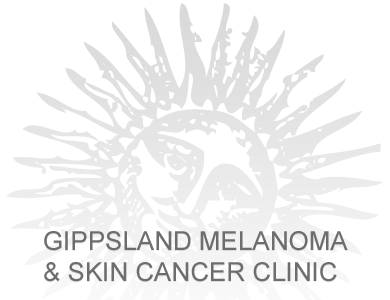These are the commonest skin lesions referred for assessment and comprise squamous cell cancers or SCCs and basal cell cancers or BCCs.
SCCs can be rapidly growing lesions over a few weeks to months and have the capacity although relatively low to metastasize or travel firstly to local draining lymph nodes and they can invade local structures although again this is usually with respect to neglected lesions present for more than a year. Most SCCs look like a non-healing sore or ulcer and can form a nodule in the skin that doesn’t look like much. There is a lesion that can be confused with an SCC which is called a keratoacanthoma but this is best managed in the same manner as for an SCC which is surgical excision with adequate margins. SCCs typically occur in sun-exposed areas of the skin, affecting individuals >60 years of age and most occur in the head and neck on the face, lips, ears and scalp. Other common sites as would be expected are the forearms, backs of hands and legs. SCCs are also common in patients taking immune-suppressive medication such as after an organ transplant or for treatment of Rheumatoid arthritis or other chronic illnesses.
BCCs are slower growing skin lesions and develop over months to years. They may invade local tissues but they rarely metastasize. Like SCCs they tend to occur in older age groups but they can be found in individuals in their twenties. They are associated with sun-exposure and of course are common on the face found on the cheeks and around the ears. Most form a pearly nodule but they can ulcerate and when neglected they can erode into deep facial structures forming the so-called ‘rodent ulcer’ which does not need further description. There are three types of categories of BCCs; nodular, superficial and morphoeic. The morphoeic BCC is a superficial lesion which spreads sidewards and needs wider excision margins. Some basal cell cancers are pigmented and are therefore difficult to diagnose prior to excision and can be confused with a melanoma. Of course the treatment for both lesions is the same, excision. In some special anatomical sites and clinical situations chemotherapy and other special creams such as Imiquimod can be used. These sites are places such as the ear canal or areas particularly difficult to treat surgically. Cryotherapy is usually not successful because BCCs arise from the deepest layer of the skin and can lead to skin cancer progression. There are other more complex treatments involving skin chemosensitisation and treatment with ‘blue light’ but in most circumstances simple excision is the best form of treatment.
For complex clinical situations involving skin field change or recurrence or advanced neglected skin lesions radiotherapy can also be a useful adjunctive treatment for both BCCs and SCCs.
